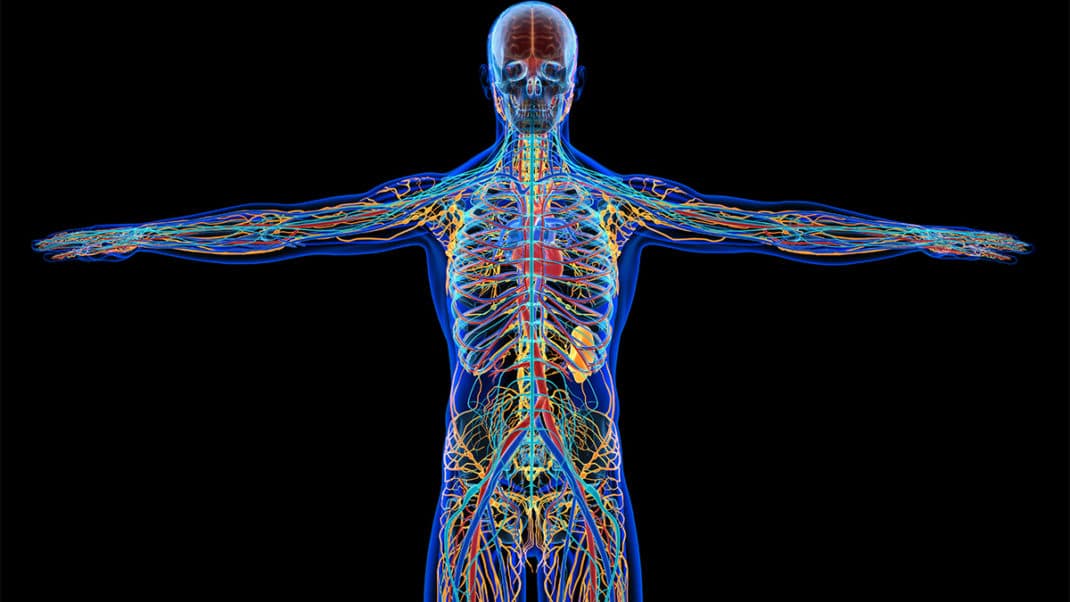Training Clients With Arthritis
Give arthritic clients new hope with a program designed to improve their strength, function, joint symptoms—and mood!
Arthritis is a health problem that affects approximately 42.7 million Americans. Projections estimate that 60 million people will be diagnosed with arthritis by the year 2020 (AF, ASTHO & CDC 1999). Commonly characterized by stiffness, pain and decreased joint function, arthritis may imperil the physical, psychological, social and economic well-being of individuals, depriving them of their freedom and independence (AF, ASTHO & CDC 1999). The disease also causes a considerable burden on the family of the afflicted person, as well as on society as a whole. In fact the treatment of arthritis and its complications costs the United States approximately $65 billion per year—$15 billion for physician visits and hospitalizations, and the rest for indirect costs resulting from lost wages (AF, ASTHO & CDC 1999).
Physicians now commonly prescribe exercise as a modality for the treatment of arthritis. Unfortunately, for many arthritic clients, the complications associated with this disorder make exercise adherence a challenge. In addition, a great deal of confusion prevails about the appropriate type and dose of exercise. Personal trainers who have a thorough understanding of the health issues associated with arthritis and some manageable exercise options will be well equipped to improve the health, functional capacity, well-being and quality of life of affected clients.
What Is Arthritis?
Arthritis is a broad term referring to more than 100 rheumatic diseases (AF, ASTHO & CDC 1999). It affects people of all ages, genders and ethnic groups, and is second only to cardiovascular disease as a leading cause of disability in the United States (Porth 1998). Of the many types of arthritis, osteoarthritis and rheumatoid arthritis are two of the most prevalent (AF, ASTHO & CDC 1999). Osteoarthritis affects 21 million people, and another 2.1 million have rheumatoid arthritis (AF, ASTHO & CDC 1999). Common to all forms of arthritis are the symptoms of joint pain, swelling, inflammation and decreased physical function (Porth 1998).
Osteoarthritis. Osteoarthritis (OA), also known as degenerative joint disease, is the most common form of arthritis (Sharma 2003). With this condition the degeneration of joint cartilage and changes in the underlying bone structure and
supporting tissues lead to stiffness, pain, movement problems and limited physical activity. OA typically affects the joints of the hands, knees, hips and feet (AF, ASTHO & CDC 1999). Commonly referred to as “wear and tear arthritis,” OA is an acute metabolic disorder of the articular cartilage and the underlying bone of the diarthrodial (freely movable) joints. OA begins when a physiologic imbalance between mechanical stress and the ability of the tissues to resist that stress leads to deterioration of the articular cartilage surrounding the bone endpoints within the joints (Porth 1998). Muscle weakness, frequently surrounding the knee joint, is a common phenomenon in people with OA, and may even be a risk factor for developing the condition (Bischoff & Roos 2003).
Rheumatoid Arthritis. Rheumatoid arthritis (RA), an inflammatory disorder that affects multiple joints, can be characterized as a chronic, systemic inflammation of the inner lining of the joint capsule (Porth 1998; AF, ASTHO & CDC 1999). Between 0.3 and 1.5 percent of the population is affected by rheumatoid arthritis, with women being more afflicted than men (Porth 1998). While RA is known to exist among all age groups, its incidence increases with age (Porth 1998). With RA the typical arthritic symptoms of pain, stiffness and swelling affect multiple joints (AF, ASTHO & CDC 1999). Inflammation can also spread to the tissues surrounding a joint, causing bone and cartilage erosion, joint deformities, movement problems and limitations in activity. In severe cases RA can affect connective tissue and blood vessels throughout the body, setting off an inflammatory response in a variety of organs, such as the lungs and heart, which can, in turn, increase mortality from respiratory and infectious diseases (AF, ASTHO & CDC 1999).
Of particular importance to personal trainers are the effects RA has on functional capacity, such as decreases in range of motion, muscle strength and endurance, and aerobic capacity. To combat these effects, exercise has emerged as an essential aspect of the rehabilitation process (Stenstrom & Minor 2003).
Exercise to the Rescue
Up until the mid-1970s, most physicians prescribed rest and reduced physical activity for patients with arthritis, but more recent research has demonstrated that a regular program of cardiovascular exercise and progressive strength training can lead to improvements in strength, function and joint symptoms in these patients (Roubenoff 2003). Fitness-related problems common to arthritis—such as flexibility loss, muscle atrophy, weakness, osteoporosis, pain, depression and fatigue—are found to respond favorably to a low- to moderate-intensity, gradually progressing program (ACSM 1997). For patients with OA, cardiovascular exercise and resistance training seem to be equally effective in treating the characteristic symptoms of pain and function loss (Bischoff & Roos 2003). For people with knee osteoarthritis, in particular, physical activity has been shown to decrease pain, improve self-efficacy and physical function, and delay disability (Macera, Hootman & Sniezek 2003).
The types of exercise found beneficial include low-intensity isokinetic training, low-intensity physical therapy, intermediate-intensity circuit training and high-intensity strength training (Roubenoff 2003). In a recent review article, Ronenn Roubenoff, MD, of Tufts University states, “Almost any form of exercise, if done carefully, will help to reverse the catabolic effects of inflammatory disease on muscle, improve function, and decrease the risk of disability” (Roubenoff 2003).
Obesity Control. Just one benefit of exercise is its positive effect on facilitating weight loss. Inactivity, a frequent consequence of arthritis, leads to a negative shift in body composition (decreased muscle mass and increased body fat percentage), raising the risk of hypertension, obesity, osteoporosis, type 2 diabetes, cardiovascular disease and cancer of the colon (ACSM 2000). Obesity has also been found to increase disability and pain in patients with established OA (Bischoff & Roos 2003; DiNubile 1997). This is not surprising, considering that the knee, for example, is prone to an increased load equal to three times a person’s body weight during walking, and five times body weight while going up or down stairs or running (DiNubile 1997). The good news is that research has demonstrated that weight loss can turn things around for these patients: In the Framingham Osteoarthritis Study, a weight loss of approximately 11 pounds decreased the risk of pain and stiffness in patients with OA by 50 percent (Nelson et al. 2002).
Improvements in Strength, Functional Capacity and Pain Control. Arthritis sufferers who participate in a gradually progressive cardiovascular and resistance training program achieve many other benefits in addition to weight loss. Researchers from Leiden University Medical Center investigated the effects of a long-term, challenging exercise program on patients with RA. Subjects in the study participated in 75-minute exercise sessions consisting of 20 minutes of bicycle training, 20 minutes of circuit training, and 20 minutes of sport and game activities twice a week for 2 years. Each session was preceded by a warm-up and cool-down (which accounts for the remaining 15 minutes). The researchers found that the exercise program was both safe and effective, with subjects showing great improvements in functional capacity and emotional status with no observable negative side effects (de Jong et al. 2003).
In another study patients affected with RA participated in a 2-year dynamic strength training program that targeted all major muscle groups. Twice a week subjects performed two sets of eight to 12 repetitions with moderate loads of 50 to 70
percent of their repetition maximum, using elastic bands and dumbbells as
resistance. Exercise prescriptions were evaluated every 6 months. Subjects showed an average strength increase of 19 to 59 percent (Häkkinen et al. 2003).
In yet another investigation, Ettinger and colleagues (1997) compared aerobic exercise and resistance exercise to an education program in older adults with OA of the knee. Subjects were assigned to one of two exercise groups or a control group. One group participated in an aerobic training program consisting of 1 hour of walking 3 days a week for 18 months. Another group took part in a resistance training program, performing two sets of 12 repetitions of nine exercises 3 days a week for 18 months. (The resistance training included leg extensions, leg curls, step-ups, heel raises, chest flyes, upright rows, military presses, biceps curls and pelvic tilts.) The control group received education only for 18 months. The researchers found that both the aerobic and resistance training groups reported less disability at the end of the study than the education group and also demonstrated increased measures of strength during knee flexion.
Pain Control. For patients with arthritis, exercise has also been proposed to have a pain-relieving effect similar to that of a pharmacological treatment (Bischoff & Roos 2003). In the Ettinger study noted above, both exercise groups reported significantly less pain than the education group.
All these studies point to the fact that persons with either OA or RA are able to participate safely in a regular exercise program to improve cardiovascular status, muscular fitness, flexibility and overall health status (ACSM 1997). Furthermore, improvements in these fitness components are associated with improved function, decreased pain and swelling, increased social and physical activity in daily life, and lessened depression and anxiety (ACSM 1997).
Exercise Program Design
Exercise programming for clients with arthritis should focus on cardiovascular conditioning, improvements in muscular strength and endurance, increased flexibility and joint mobility, and joint protection (DiNubile 1997; ACSM 1997). When designing programs for these clients, who generally tend to be less active and less fit than healthy clients, keep in mind the
following considerations (ACSM 1997):
- Pain, stiffness, biomechanical ineff-
iciency and gait abnormalities can
increase the metabolic cost of physical
activity by as much as 50 percent.
- Range of motion in the affected joints
may be restricted by pain, stiffness,
swelling and bony changes.
- Difficulty performing the rapid,
repetitive movements of activities
such as walking and cycling may affect
exercise performance.
- The best exercise modes for both
cardiovascular conditioning and resis-
tance training should be determined by
the site and severity of affected joints.
- Poorly controlled exercises and high-
impact movements present a high risk
for injury in deconditioned and poorly
supported joints.
The Cardiovascular Program
The goal of the cardiovascular exercise program should be to increase cardiovascular endurance and peak work (optimal effort for physical activity) (ACSM 1997). Mode selection is of utmost importance. Emphasis should be placed on exercises that are predominantly non-weight-bearing and utilize large muscle groups. If possible, a multimode approach should be used. High-impact exercises are relatively contraindicated. Some appropriate modes of exercise include water walking; swimming; aquatic exercise; dance; rowing; brisk walking; and, for some clients, cycling (ACSM 1997; Finckh, Iversen & Liang 2003). (For some arthritic sufferers, the repetitive nature of cycling may be contraindicated.) People who are affected by arthritis of the hip or knee should avoid stair climbing, jogging and running (ACSM 1997).
As with all clients, a proper warm-up should be incorporated to condition muscles prior to activity and prepare the joints for the more challenging demands of the workout. The resistance setting for activities such as cycling, rowing and elliptical training should be reduced when exercising affected joints. Shoes and insoles with maximum shock attenuation are recommended (ACSM 1997) for people participating in weight-bearing activities. A low intensity and reduced duration should be employed in the initial phase of programming to allow for gradual adaptation to the exercise program. See “Cardiovascular Exercise Guidelines for Persons With Arthritis” on page tk for specifics about intensity, frequency, duration and progression.
The Resistance
Training Program
A well-designed resistance training program can help clients with arthritis by strengthening the muscle groups around the affected joints, thereby offering protection and stabilization, improving shock absorption and reducing the mechanical stresses that can hasten cartilage degeneration (DiNubile 1997). The goal should be to increase muscular strength and endurance, peak torque, power and joint stabilization (ACSM 1997). A sound program should incorporate all the major muscle groups, not just those supporting the joints affected by arthritis.
Appropriate tools and modes of exercise include free weights, weight machines, isometric exercises, elastic bands and ankle weights (ACSM 1997; DiNubile 1997). Intensity should be individualized to suit the client’s needs and abilities. Exercises involving the muscles of affected joints should be lighter in the early stages of the program. A severely deconditioned client or one who has an advanced state of arthritis may be able to start off with only two to three repetitions (ACSM 1997). To ensure that affected joints are protected at all times, exercises should always be performed with a controlled, smooth action. Many common exercises must be modified in order for a client to perform them through a pain-free range of motion (e.g., by performing partial squats instead of full squats or stationary lunges instead of step-forward lunges). See “Resistance Exercise Guidelines for Persons With Arthritis” on page tk for specifics on frequency, intensity, duration and progression.
The Flexibility Program
Stretching and active and passive range-of-motion exercises can help clients with arthritis maintain and improve mobility. The flexibility program should place special emphasis on the lower back, hamstrings, calves and front of the shoulders, since these areas frequently lose flexibility with age. Daily sessions have been proved safe. A thorough warm-up should be performed to increase body temperature and circulation. See “Flexibility Exercise Guidelines for Persons With Arthritis” below for specifics.
The Role of the
Personal Trainer
Research has demonstrated that both exercise and resistance training are not only possible for clients with arthritis
but also highly beneficial. Familiarizing yourself with this disease and the proper interventions can prepare you to make a real difference in the lives of your arthritic clients.
» Obtain medical clearance from the client’s physician prior to beginning an exercise program.» Incorporate smooth, rhythmic activities that use the large muscle groups.» Avoid high-impact exercises that might stress the affected joints.» Establish a frequency of 3 to 5 days per week.» Set an intensity of 60 to 80 percent of maximum heart rate.» Depending on the initial fitness level of the client, you might begin with as little as 5 minutes of cardiovascular activity and gradually progress to 30 minutes.» When progressing, increase duration before intensity.» Modes of exercise may include walking, rowing, swimming, cycling and aquatic workouts. » Avoid exercise during periods of peak pain and joint inflammation.
» Obtain medical clearance from the client’s physician prior to beginning an exercise program.» Begin each session with an adequate joint-range-of-motion warm-up.» Avoid exercises that cause increased joint pain.» Establish a frequency of 2 to 3 days per week. Allow 24 hours between sessions for recovery.» With deconditioned clients, begin with just two to three repetitions, and gradually progress to 10 to 12.» Modes of exercise may include free weights, weight machines, isometrics and elastic bands.» Avoid high-repetition, high-resistance exercises that cause a greater force impact on affected joints.» Avoid exercise during periods of peak pain and joint inflammation.
» Obtain medical clearance from the client’s physician prior to beginning an exercise program. » Precede sessions with a thorough warm-up to increase internal body temperature and circulation. » Incorporate flexibility work as often as every day.» Give special attention to the lower back, hamstrings, calves and front of the shoulders.» Include static stretches, holding for 10 to 30 seconds. Stretches may be repeated one to four times.
References
American College of Sports Medicine (ACSM). 1997. ACSM’s Exercise Management for Persons with Chronic Diseases and Disabilities. Champaign, IL: Human Kinetics.
American College of Sports Medicine (ACSM). 2000. ACSM’s Guidelines for Exercise Testing and Prescription, 6th ed. Philadelphia: Lippincott Williams & Wilkins.
Arthritis Foundation (AF), Association of State and Territorial Health Officials (ASTHO) & Centers for Disease Control and Prevention (CDC). 1999. National Arthritis Action Plan: A Public Health Strategy. www.cdc.gov/nccdphp/pdf/naap.pdf.
Bischoff, H.A., & Roos, E.M. 2003. Effectiveness and safety of strengthening, aerobic, and coordination exercises for patients with osteoarthritis. Current Opinion in Rheumatology, 15, 141-4.
De Jong, Z., et al. 2003. Is a long-term high-intensity exercise program effective and safe in patients with rheumatoid arthritis? Arthritis & Rheumatism, 48 (9), 2415-24.
DiNubile, N.A. 1997. Osteoarthritis: How to make exercise part of your treatment plan. Physician and Sports Medicine, 25 (7), 47-58.
Ettinger, W.H., et al. 1997. A randomized trial comparing aerobic exercise and resistance exercise with a health education program in older adults with knee osteoarthritis: The Fitness Arthritis and Seniors Trial (FAST). Journal of the American Medical Association, 277 (1), 25-31.
Finckh, A., Iversen, M., & Liang, M.H. 2003. The exercise prescription in rheumatoid arthritis: Primum non nocere. Arthritis & Rheumatism, 48 (9), 2393-5.
Häkkinen, A., et al. 2003. Effects of dynamic strength training on physical function, Valpar 9 work sample test, and working capacity in patients with recent-onset rheumatoid arthritis. Arthritis & Rheumatism, 49 (1), 71-7.
Macera, C.A., Hootman, J.M., & Sniezek, J.E. 2003. Major public health benefits of physical activity. Arthritis & Rheumatism, 49 (1), 122-8.
Marieb, E. 1998. Human Anatomy & Physiology, 4th ed. Menlo Park, CA: Addison Wesley Longman Inc.
Nelson, M.E., et al. 2002. Strong Women and Men Beat Arthritis. New York: Berkley Publishing Group.
Porth, C.M. 1998. Pathophysiology: Concepts of Altered Health States, 5th ed. Philadelphia: Lippincott Raven Publishers.
Roubenoff, R. 2003. Exercise and inflammatory disease. Arthritis & Rheumatism, 49 (2), 263-6.
Sharma, L. 2003. Examination of exercise effects on knee osteoarthritis outcomes: Why should the local mechanical environment be considered? Arthritis & Rheumatism, 49 (2), 255-60.
Stenstrom, C.H., & Minor, M.A. 2003. Evidence for the benefit of aerobic and strengthening exercise in rheumatoid arthritis. Arthritis & Rheumatism, 49 (3), 428-34.





